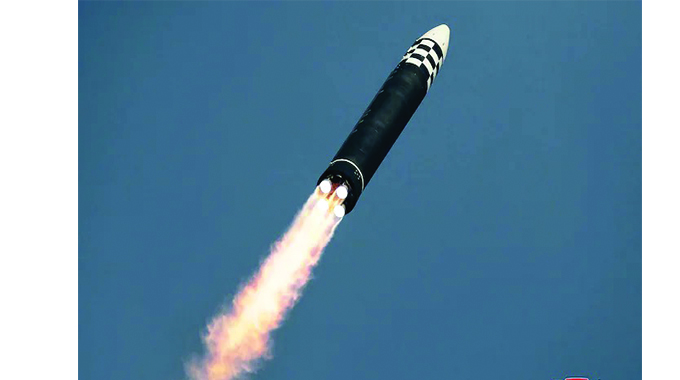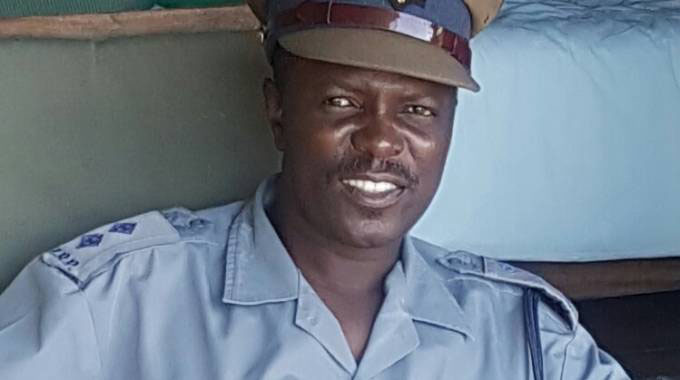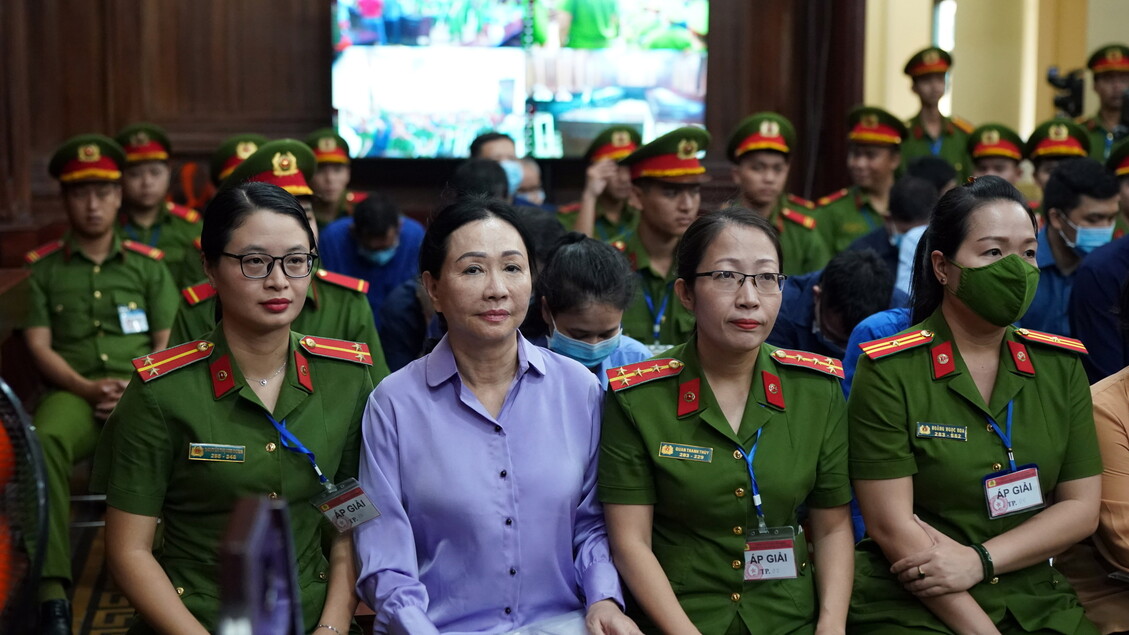What does North Korea’s new monster ballistic missile test mean?

In October 2020, North Korea paraded a new and untested monster missile through the streets of Pyongyang, sending a chilling reminder that its nuclear deterrent poses a serious threat to the U.S. homeland.
On Thursday, Pyongyang appears to have tested that intercontinental ballistic missile for the first time. North Korean state media declared that its “super-large” new ICBM is a “powerful nuclear war deterrent.”
If confirmed, the launch could indicate progress at both reaching any location in the continental United States with the goal of delivering multiple nuclear warheads at a time in case of nuclear war.
In the five years since North Korea conducted its last ICBM test, politics in the region and in the United States have changed a lot. Russia is at war in Ukraine, the U.S.-China economic and security competition is intensifying, and South Korea’s president-elect thinks the current administration’s pro-engagement approach was a failure.
Russia and China – two permanent members of the United Nations Security Council – are drawing closer together on North Korea, and the council is unlikely to present a unified front to the ICBM test as it has in the past. A muddled international response to North Korea’s dramatic actions could risk emboldening North Korean leader Kim Jong Un.
With a new conservative South Korean president taking office in May vowing a tougher stance on North Korea, the fresh ICBM test sets the stage for heightened inter-Korean tensions. Some South Korean analysts say Seoul and Washington need to clearly demonstrate their military readiness in response to the test – which is sure to be viewed as hostile by the North.
Because of the U.S. attention on Ukraine, “it will be difficult to directly implement any short-term measures right now, but I think it is necessary to symbolically send a sign that the United States is paying some attention to the Korean Peninsula issue as well,” said Cha Du-hyeogn, an analyst at Seoul’s Asan Institute for Policy Studies who was a security adviser to former conservative President Lee Myung-bak.
A big unknown is if North Korea will make a pivot back to diplomacy following the 2019 nuclear negotiations collapse, and what this ICBM tells us about North Korea’s timeline. For now, North Korea is pressing ahead with its five-year plan to diversify and expand its weapons system, which could be used as leverage ahead of future negotiations.
The test also served as a reminder that North Korea intends to remain on the U.S. radar despite Washington’s other foreign policy priorities, Cha said.
“From North Korea’s perspective, they want to demonstrate that despite sanctions, they are unshaken, and following the path they chose,” he said. “The American interest is drifting away from North Korea, and it wants to signal that North Korea should remain a priority.”
North Korean leader Kim authorised and oversaw the test, state media announced Friday, along with photos and videos of a gleeful Kim. State media called the missile a “powerful nuclear war deterrent,” quoting Kim saying the missile “will clearly show the might of our strategic force to the world once again.”
“It is necessary to make clear that whoever tries to infringe upon the security of our state shall pay dearly,” the statement read. “Our state defence capability will make thorough preparations for long confrontation with U.S. imperialism on the basis of the tremendous military technical force unflinching even to any military threat and blackmail.”
Laura Grego, Stanton Nuclear Security Fellow at MIT’s Laboratory for Nuclear Security and Policy, said U.S. missile defense systems already would have a difficult time defending against North Korean ICBMs, and the increasing sophistication of its weaponry is becoming even more challenging.
“North Korea isn’t just seeking more missiles, it has ambitions to develop better and more capable missiles, that can reach further, carry heavier payloads, better get through missile defences,” she said, advocating for a diplomatic solution.
“The U.S. is not going to solve the problem of North Korean nuclear weapons with missile defense, it’s a political problem that needs a diplomatic solution,” she said.
The White House strongly condemned the launch and the United States, South Korea and Japan are discussing avenues to potentially press for more sanctions. White House press secretary Jen Psaki said “the door has not closed on diplomacy, but Pyongyang must immediately cease its destabilizing actions.”
Danny Russel, former U.S. assistant secretary of state for East Asia and Pacific affairs during the Obama administration, credited the Biden administration for its approach, urging it to continue to be open to diplomacy “without chasing it or offering concessions in hopes that Kim will be lured to the table,” and bolstering its deterrence and defence with South Korea and Japan.
“There are no good options for dealing with Kim’s nuclear blackmail but there are plenty of bad ones. We learned that from the ill-advised Kim-Trump summits, which eased pressure on North Korea without restraining its nuclear and missile programs,” Russel said.
The missile, which North Korea claims is the new Hwasong-17 (“hwasong” means Mars in Korean), flew at a “lofted trajectory” like previous ICBM tests, meaning it was fired almost straight up so as not to fly over the airspaces of neighboring countries.
It flew higher and farther than the previous ICBM in 2017, as far as 683 miles (1,100 km) and as high as 3,850 miles (6,200 km). It flew for 71 minutes – 17 minutes longer than the Hwasong-15 test in 2017.
But North Korea has still yet to demonstrate that it could deliver a nuclear weapon over long distances. For example, it has not shown that it has the reentry capabilities to be able to carry multiple warheads successfully through the earth’s atmosphere.
“They haven’t proven the reentry vehicle can survive the rigorous flight at that [intercontinental] range,” said Vann H. Van Diepen, a former senior nonproliferation official at the State Department. “Do the North Koreans actually intend to bring this thing to deployment? How many of them will be deployed? All of that is unknown.”
Still, the test made clear North Korea’s nuclear ambitions aren’t going away, he said.
“Clearly they’re showing that they have every intention to remain a nuclear-armed state,” he added. “They clearly intend to continue to maintain the ability to strike targets on the United States with nuclear weapons, there’s no sign that they’re prepared to give that up.”–The Washington Post











Comments